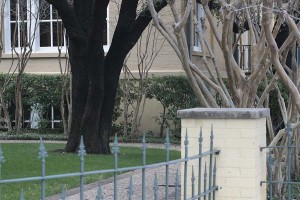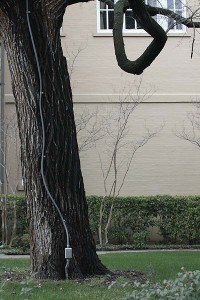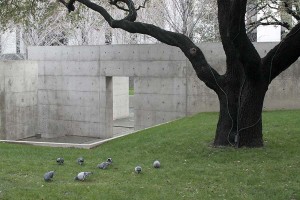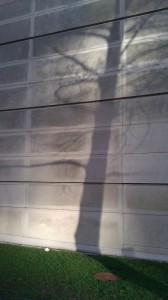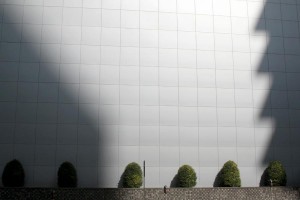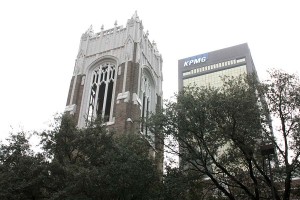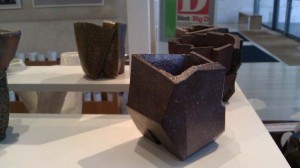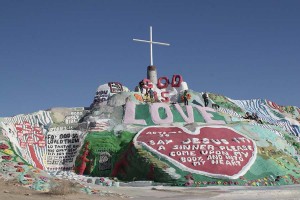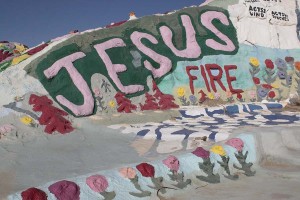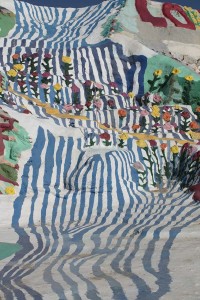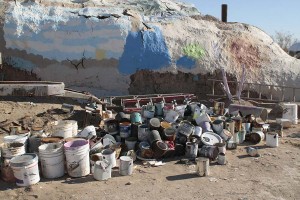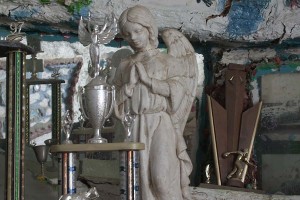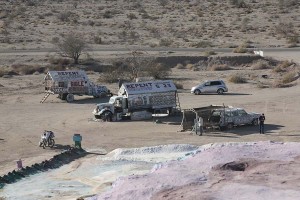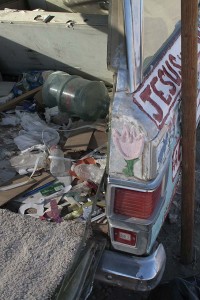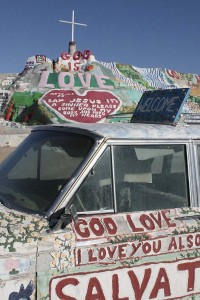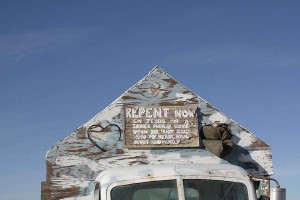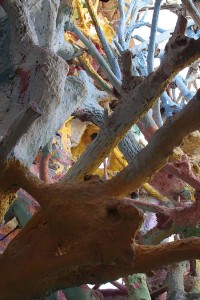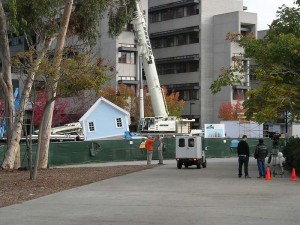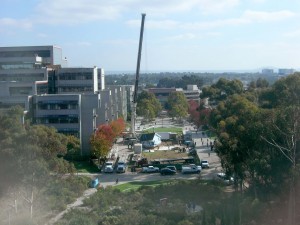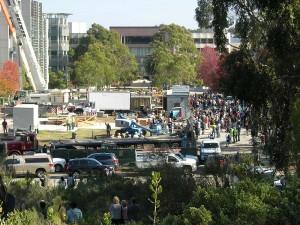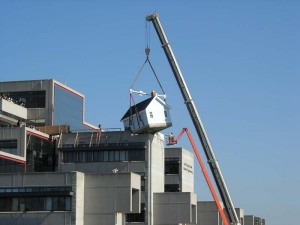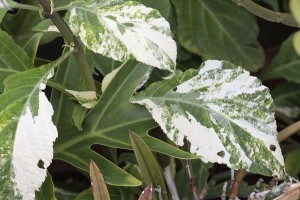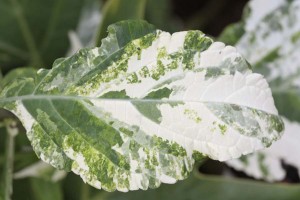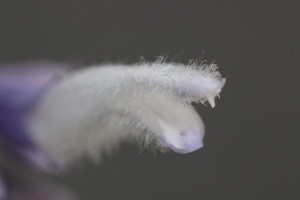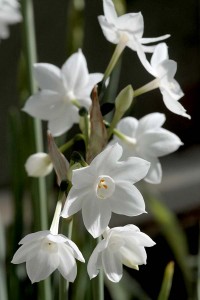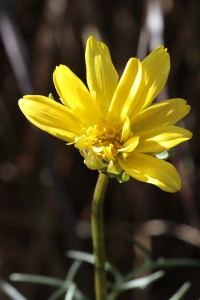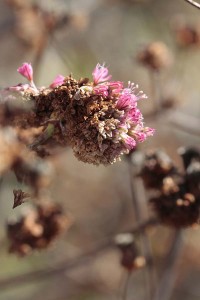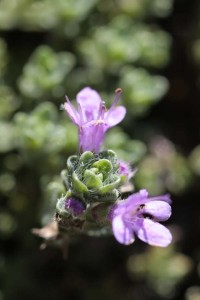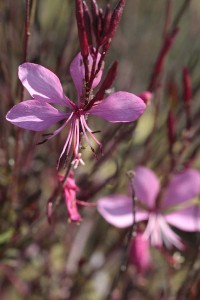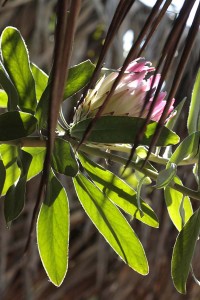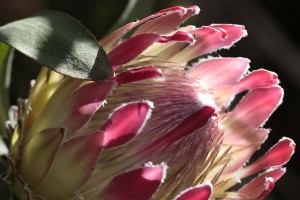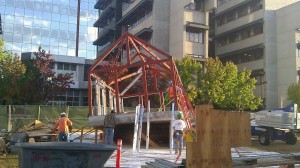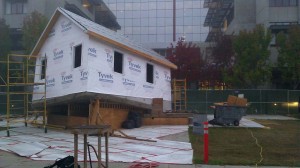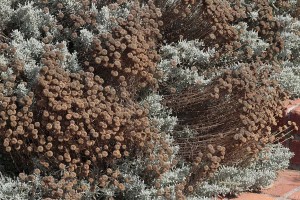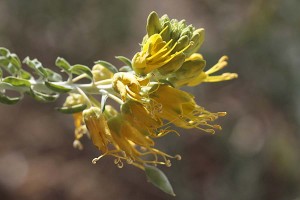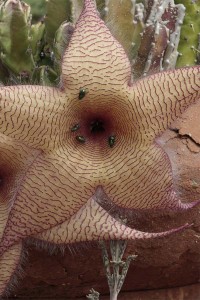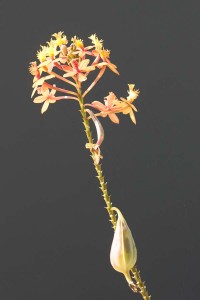A trip to Dallas gives you the opportunity to visit the Sixth Floor Museum, an institution that “chronicles the assassination and legacy of President John F. Kennedy; interprets the Dealey Plaza National Historical Landmark District and the John F. Kennedy Memorial Plaza; and presents contemporary culture within the context of presidential history.”
Whenever anyone hears about the place, the initial reaction is something like “ooh, creepy.” But the thing is done so simply and respectfully that it’s worth fighting the ick factor.
The museum–no interior photography allowed, sorry–builds a narrative that leads up to and recedes from a re-creation of the sniper’s nest on the sixth floor of what was back then the Texas Book Depository building. From the outside, immediately below the cornice, there on the right, you can see the infamous partially-open window.
Down below there’s an embankment planted with grass, the “grassy knoll” that figures in some scenarios as the location of a possible second gunman.
It’s also the location of a big banner screaming “Grassy Knoll” in case you didn’t figure what it is.
Planting a big banner on an embankment doesn’t make it any more of knoll, however. From my imperfect understanding of landscape terms a knoll is a gentle bump on a flattish landscape. (There might be sheep nearby.) This instead is a grassy embankment beside a road that feeds into a highway. This is not a knoll.
This, however, is a knoll, and quite a grassy one at that. (Image by Rosser1954 at the Wikimedia Commons.)
On the pavement right in front of the G.K., you can see one of the two white X’s that mark the locations of the limousine when it was struck by gunfire. It’s probably the most tacky or mawkish thing you’ll see on your visit.
Down on the plaza you can look up to the open window, across to the “knoll,” or down into a big water feature filled with winter leaves moving slowly in the breeze-driven water currents. You can trance out to the little epicycles that the leaves take through the water, or you can try to ignore traffic and reflect quietly on the events that took place here fifty years ago.
I’d guess that most Dallas residents aren’t so thrilled for being known for living in the city that killed JFK. But this is history, and I’m glad I came to pay my respects.





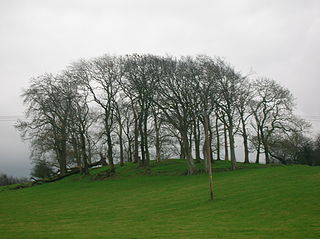

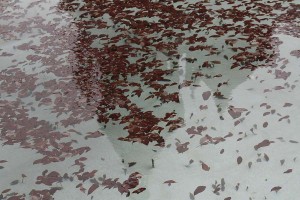



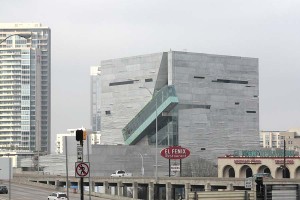
 (Photo by Magnus Manske, from the
(Photo by Magnus Manske, from the 